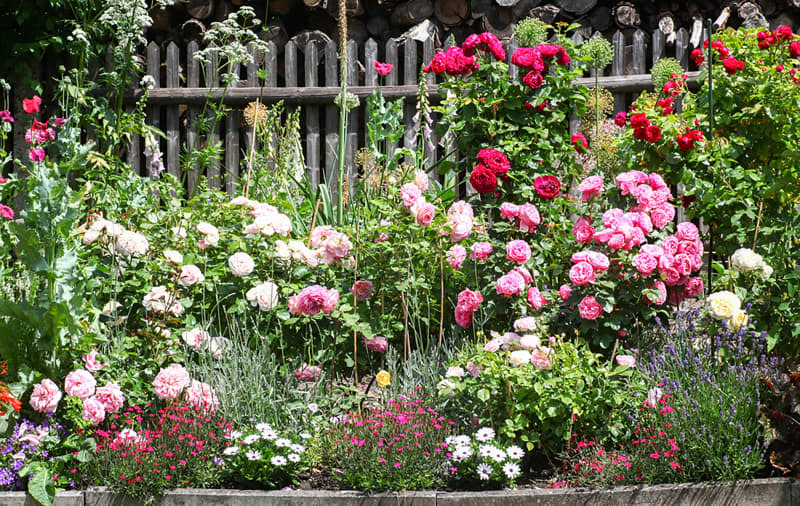This Is the 1 Thing to Do ASAP for a Thriving Spring Garden

Regardless of groundhog activities, February is still very much mid-winter, and temperatures are colder than usual for most regions of the United States. Even the thought of heading outside induces the shivers, so many folks are staying indoors and curling up with a warm drink while wearing the coziest loungewear — and gardening is probably the furthest thing from their minds.
But while you might still be feeling semi-dormant before spring fever hits, there is one outdoor gardening task to check off the ever-growing to-do list: pruning. Although now isn’t the ideal time to prune all plants — avoid pruning rambling roses, pros say! — Vicky Popat, gardening expert and co-founder of Plant-O-Gram, gives her best tips on which plants could use your attention this season. Here’s what to prune in the month of February.
Roses
As one of the most popular Valentine’s Day gifts, it’s only fitting that now is the perfect time to start pruning roses, so let the February holiday serve as a reminder. “Late winter is ideal for pruning most types of roses,” advises Popat. She also suggests cutting back any dead or diseased wood, thinning crowded areas, and shaping the plant. “Aim to open up the center of the plant to allow light and air circulation, which helps prevent disease,” she adds.
According to Popat, another rose-centric task to put on your schedule is applying a layer of organic mulch around the base of each rose bush. A fresh layer will help suppress weeds and help the plant retain moisture, and because organic matter decomposes over time, it will release nutrients into the surrounding soil. Applying a balanced fertilizer after pruning your roses will also aid in encouraging new growth as spring arrives.

Fruit Trees
Fruiting trees can get out of shape quickly as their growth surges when warm weather hits. Cutting back these plants before their growing season can help the plant thrive and produce more fruit. Popat’s advice? “Prune apple and pear trees to maintain shape and encourage the growth of fruiting spurs,” she says.
One point of caution is to check your growing region for the possibility of silver leaf disease, which can impact stone fruits, such as peaches, plums, and cherries, if pruned too early. Now is also a great time to apply a slow-release fertilizer and check for pests and diseases to prevent them from spreading and harming the trees.
However, Popat discourages over-pruning your citrus trees before spring arrives. “Light pruning can be done to shape the tree and remove any dead or crossing branches,” she says. Although you should avoid heavy pruning, there are things you can do to ready your plants for growing season, such as applying a citrus-specific fertilizer to support spring growth and keeping the soil around these trees moist but not soggy.
Deciduous Shrubs and Trees
Deciduous plants — those that shed their leaves each year — are also softly sleeping as they rest from their growth and leaf-shedding seasons. Therefore, the best time to tame their branches is before they start budding and producing new leaves. “Many deciduous trees and shrubs can be pruned in February to remove damaged or diseased branches and encourage healthy growth,” Popat says.
Interestingly, if you haven’t considered propagating plants from cuttings, late winter is an ideal time to start. (Yep, the propagating process for houseplants is pretty similar to what you’d use for outdoor ones.)
“February is still a good time for hardwood cuttings of deciduous shrubs and trees, including forsythia, hydrangea, and willow,” recommends Popat. You can also propagate semi-hardwoods like holly and boxwood during this time of year.

